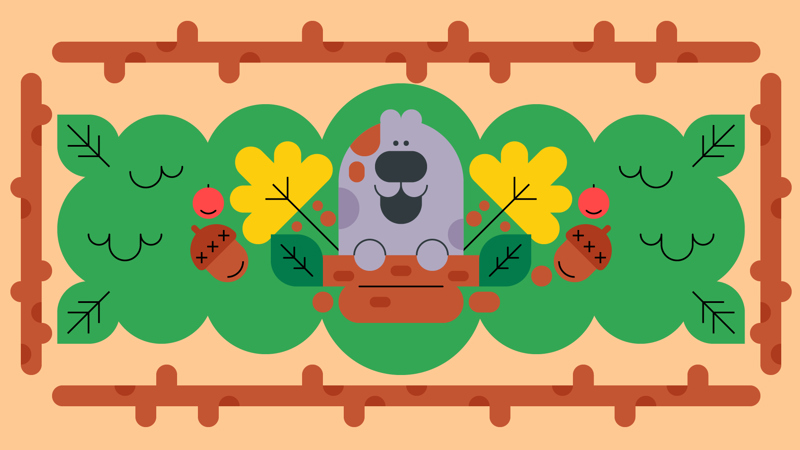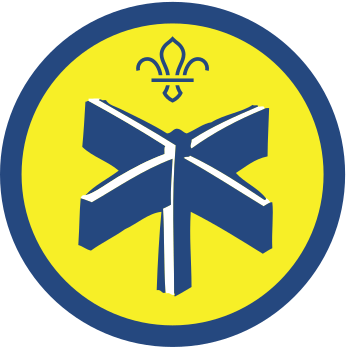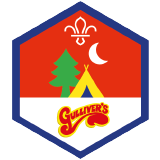
Park life portraits
You’ll need
- a bag or container per person (something about the size of a sandwich bag or lunchbox is ideal)
Before you begin
- You may want to split this activity over two sessions so everyone has a whole session to explore the park and collect items, and then another session to make their portrait.
- Involve the group in deciding where to go; they may be eager to visit a specific type of place.
- Don’t forget to do a risk assessment, and invite parents and carers (and Young Leaders) to come with you.
Visit the park and search
- Everyone should travel safely to the park.
- The person leading the activity should ask what people know about parks already. They may want to think about what happens there, who does there, and what natural and manmade things people may find.
- The person leading the activity should give everyone a bag or container to collect the things they find. People may need to write their names on their bag, especially if they won’t be making their portraits in the same session.
- Everyone should think about the sorts of materials they could gather. What do they think they’ll find? There may be leaves, petals, twigs, or feathers.
- Everyone should remember that they shouldn’t pick anything up unless they’re sure it’s safe to do so. If they’re not sure, they should check with the person running the activity (or another adult with the group).
- Everyone should start searching for items to put in their bag and take away to create a park life portrait. They should try to get a variety of colours and textures.
- The person leading the activity should encourage people to search in places they wouldn’t normally look, including under trees, near fences, or at the edges of flower beds. Remember: no one should trample on any plants, or take anything from a living plant.
- If there’s time once everyone’s finished searching, people could enjoy some time on any play equipment, or even have a snack together.
Create a portrait
- The person leading the activity should mark a square area on the ground for each person’s portrait.
- Everyone should think about a moment from their adventure around the park. It could be venturing under a tree of find the biggest fallen leaf, or maybe it could be getting really muddy knees from crawling somewhere.
- Everyone should get creative and use the natural materials they gathered to make a picture of the moment they thought about in the square marked out for them.
- Once everyone’s happy with their portraits, they should take a step back and admire their work. Everyone should look at everyone’s portraits, and each artist-explorer should explain their picture and the adventure they had.
Reflection
This activity was a chance for everyone to try new things in a place they may have visited before. Has anyone been to the park before? Does anyone go a lot? What do people normally do at the park? Some people may head straight for the play equipment, or look at a favourite tree or flowerbed. In this activity, they spent their time differently, searching for natural materials for their picture. Did anyone find anything new? Would people like to explore like this more often?
This activity was also a chance to value the outdoors. Did anyone find anything unusual or surprising? They could share what they found in the group. Parks are really special places. How do people think they may change with the seasons – would they expect to find different things if they visited in a few months’ time? Parks are important because they’re a space for everyone to play and relax, and they’re a green space for plants and wildlife to live. Next time people visit a park, they could think about everything they found in this activity.
Safety
All activities must be safely managed. You must complete a thorough risk assessment and take appropriate steps to reduce risk. Use the safety checklist to help you plan and risk assess your activity. Always get approval for the activity, and have suitable supervision and an InTouch process.
- Outdoor activities
You must have permission to use the location. Always check the weather forecast, and inform parents and carers of any change in venue.
- Gardening and nature
Everyone must wash their hands after the activity has finished. Wear gloves if needed. Explain how to safely use equipment and set clear boundaries so everyone knows what’s allowed.
People could work in groups and collect materials in one communal collection. They’ll need to work together to share the materials out to make their portraits.
Make sure the park you’re planning to visit is accessible for everyone. People could work together to collect items if anyone finds it difficult to reach things or pick them up. People could create their portrait on a raised surface like a table if they can’t reach down to the ground. No one has to talk in front of everyone to explain their picture – they could ask someone else to help.
All Scout activities should be inclusive and accessible.
Everyone could reflect on the park, and decide together if there’s anything they could do to improve it. Perhaps they could plan a litter pick, fix a bench, or work to help the biodiversity. This could count towards the Community Impact Staged Activity Badge.

